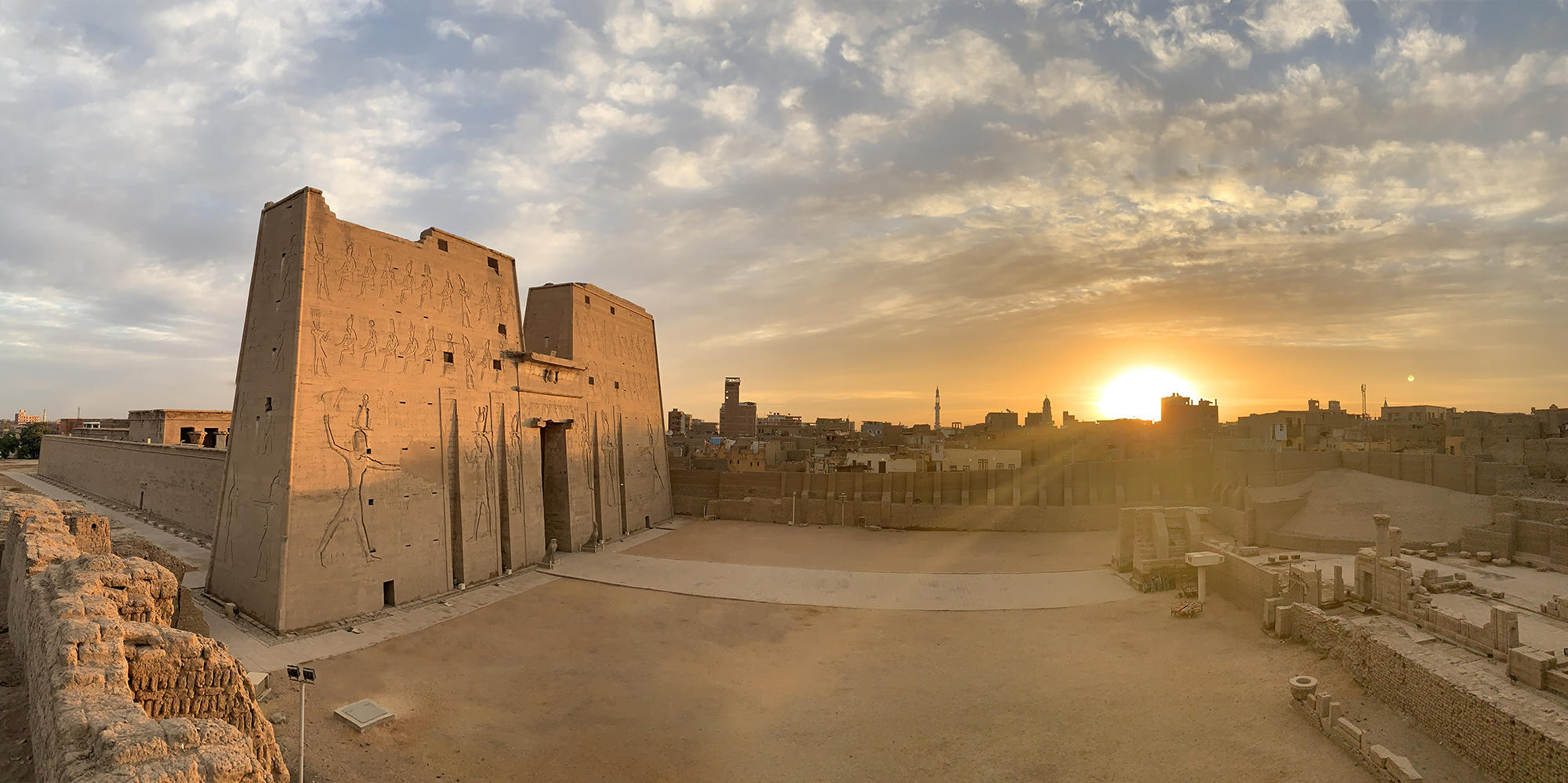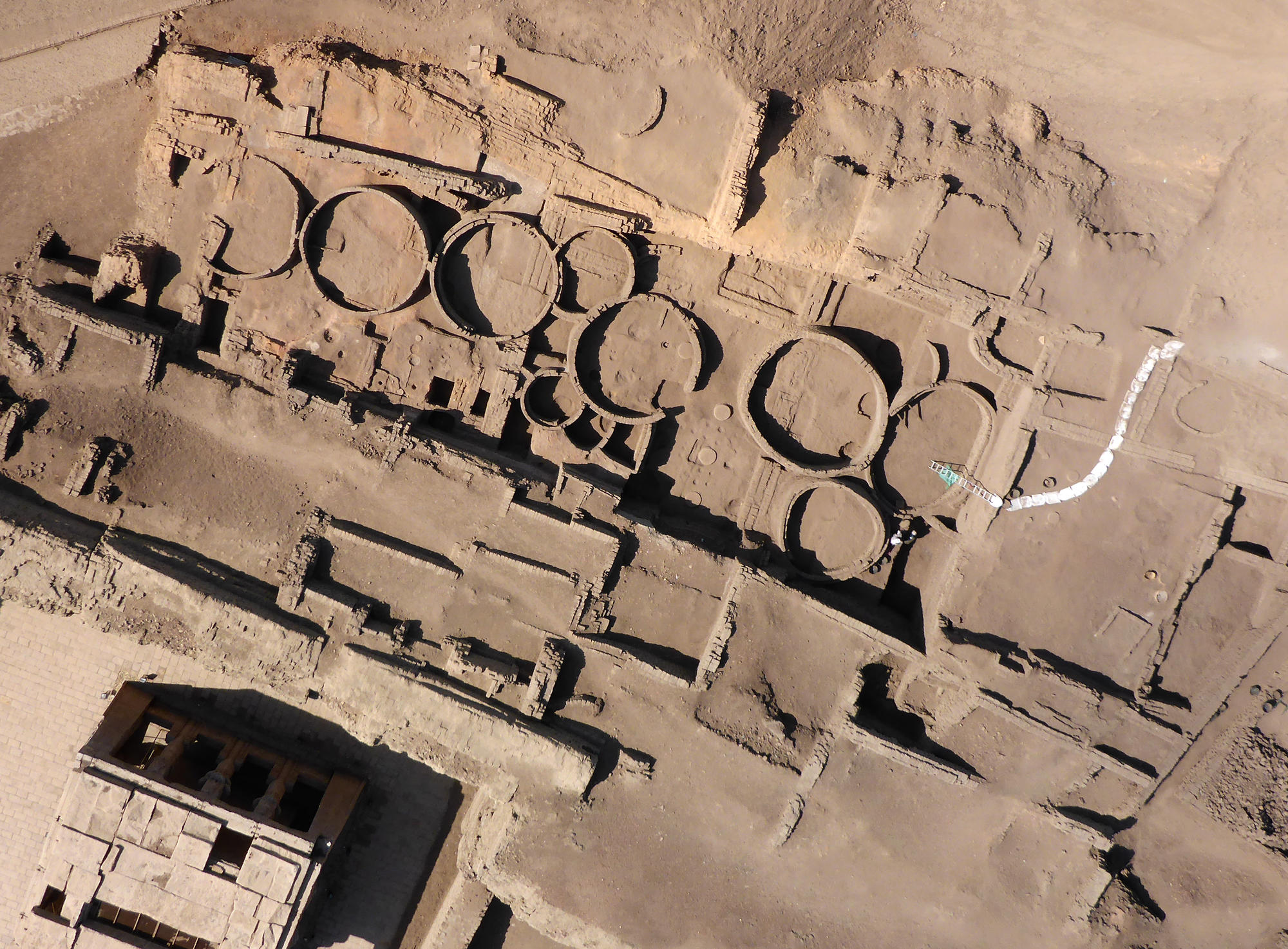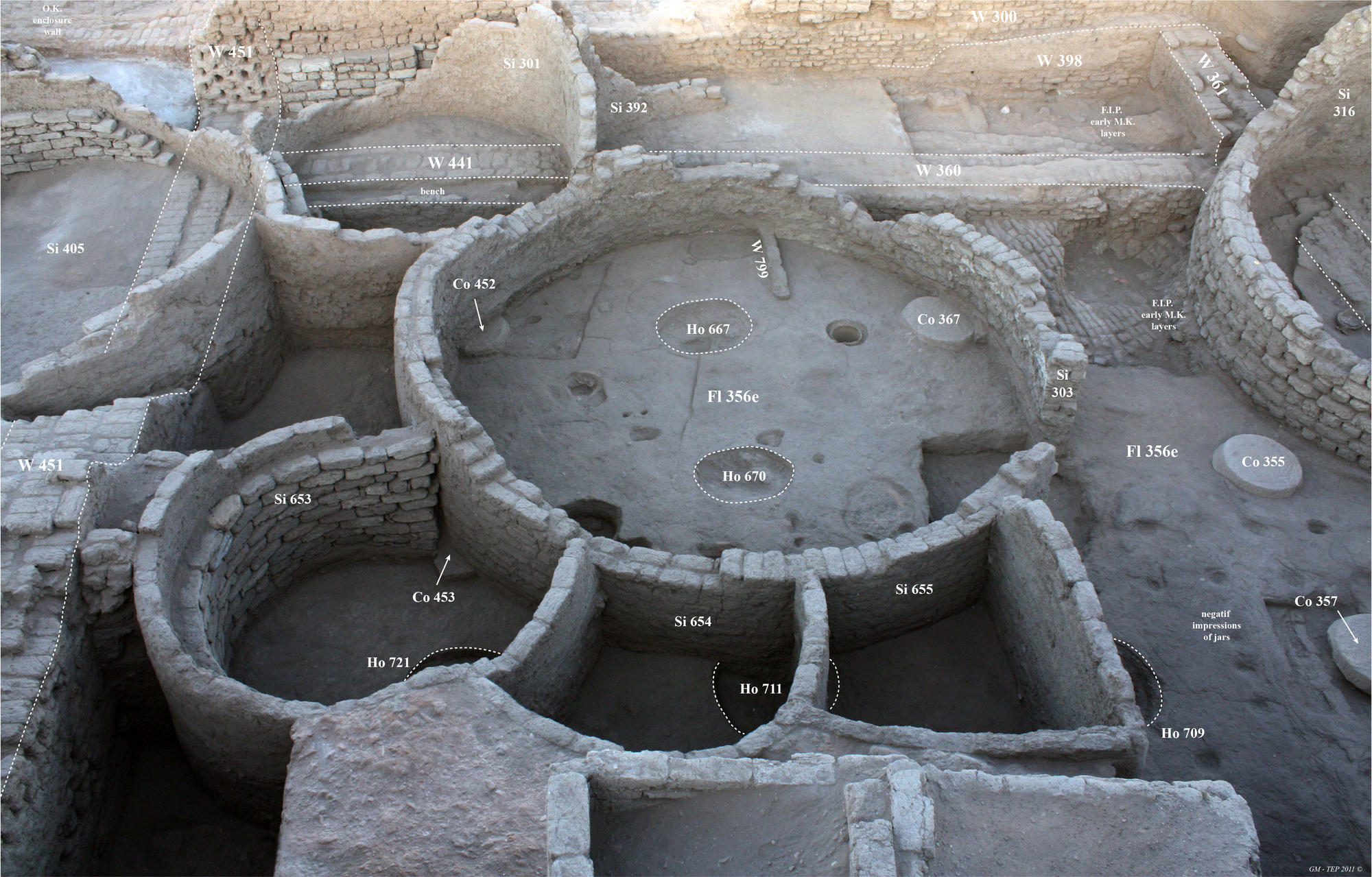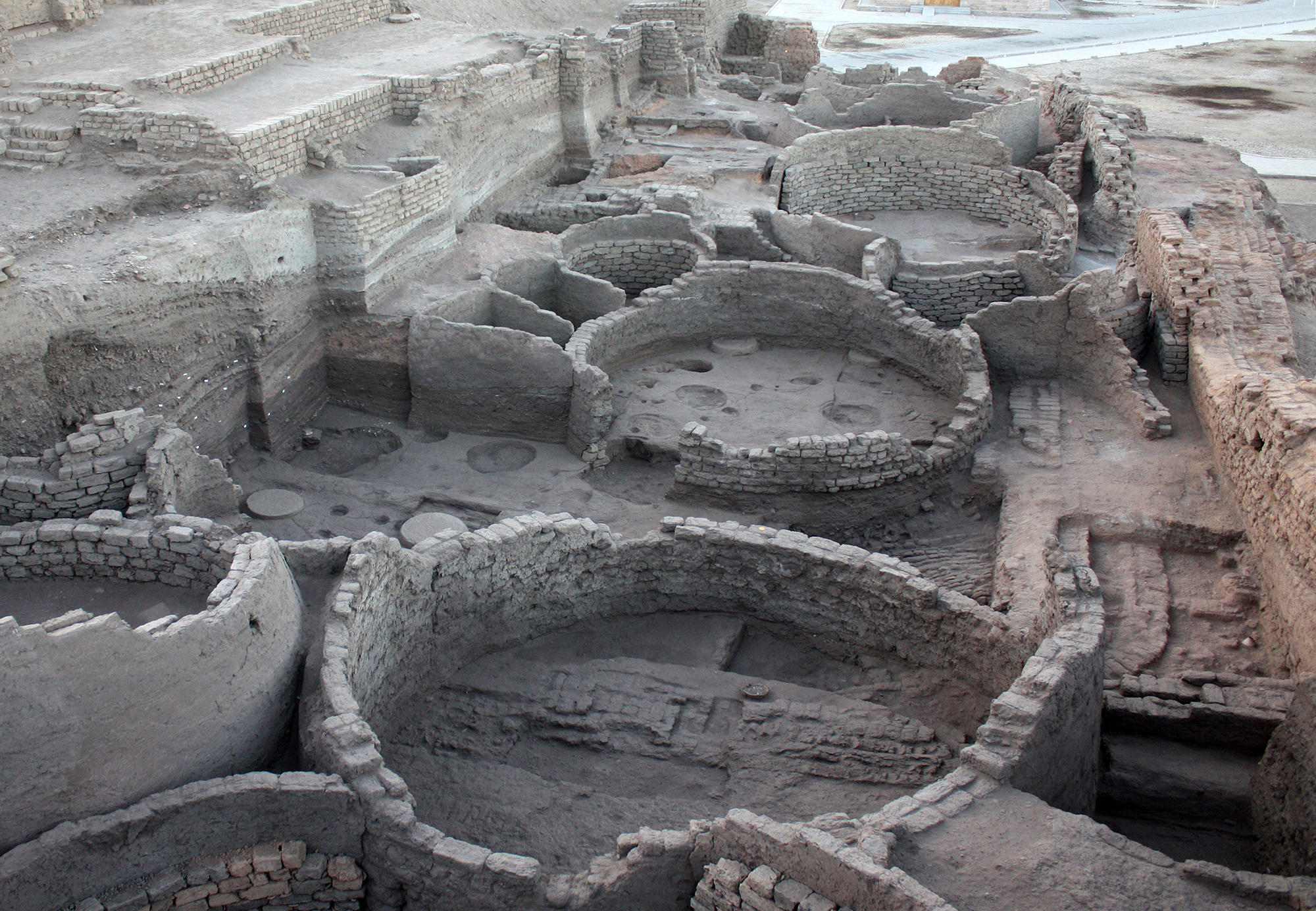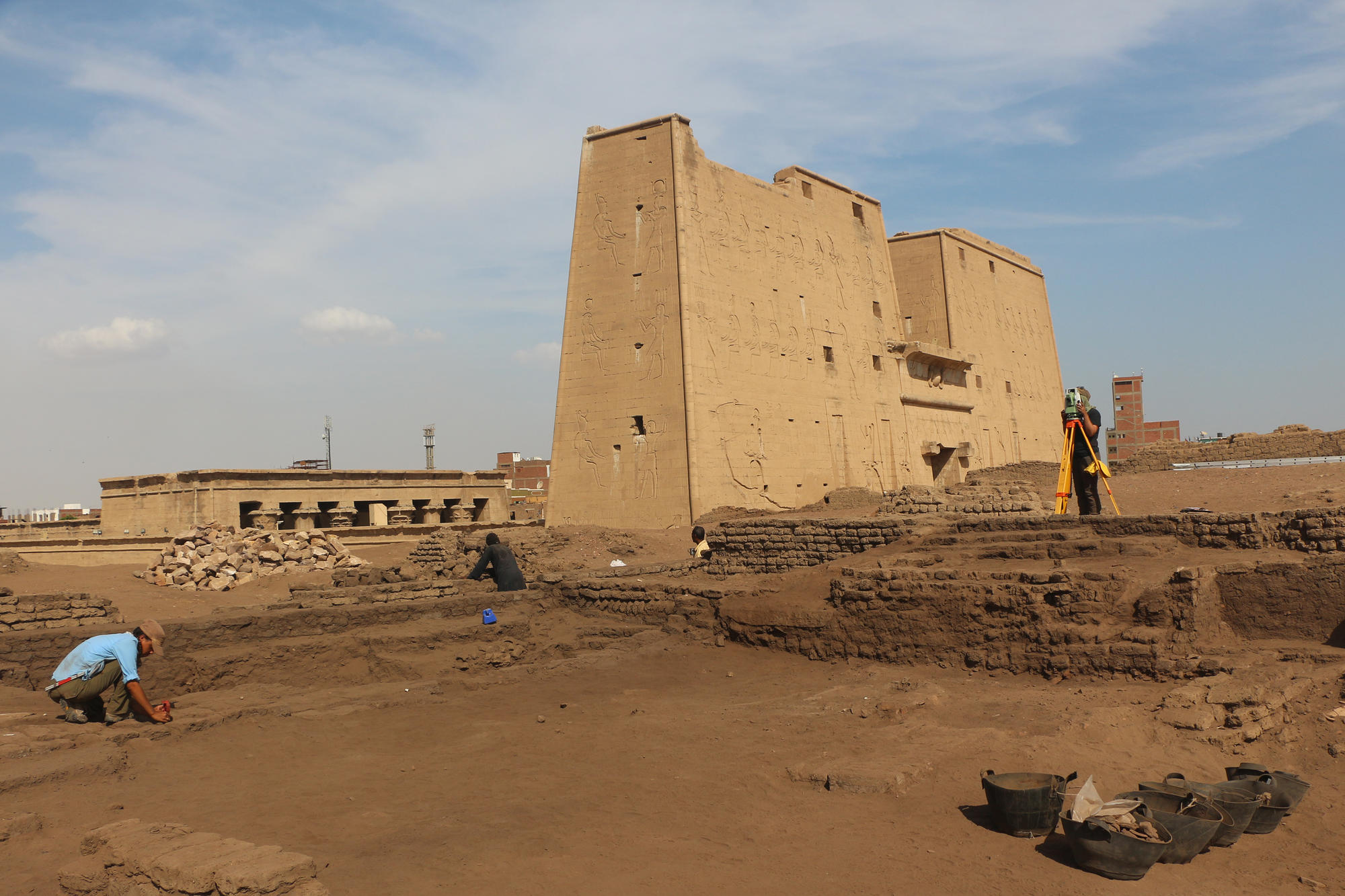The ancient town of Edfu is situated on the west bank of the Nile, halfway between Luxor and Aswan. Two names, Behedet and Djeba, are attested for Edfu for the Pharaonic Period. There is evidence for the former from the Old Kingdom onwards. Djeba, however, has its earliest attestation in the Middle Kingdom. This is probably also the origin of the Coptic name, which is Etbo. In the Ptolemaic Period, the town was called Apollinopolis Magna. In ancient times, Edfu was the capital of the 2nd Upper Egyptian nome and thus played an important role within the region. The floodplain is quite wide in this part of the Nile Valley, approximately 6.7 km from the western desert edge across to the eastern one. The upstream limits of the 2nd Upper Egyptian nome lay about 13 km north of Edfu, while the downstream border was situated 15 km to the south. Several routes connect Edfu via the Eastern Desert to the Red Sea coast. Further desert roads lead from Edfu through the Western Desert to the oasis of Kharga, which made it a strategically important starting and/or end point for trade and mining expeditions.
The ancient town of Edfu is situated on a naturally elevated sandstone outcrop on the west bank of the Nile, which provided the necessary protection from the annual floodwaters. Today the Nile lies 1 km to the east of it, and we have little information on how this differs from the ancient course of the river. A detailed geo-morphological study is still lacking, but first attempts have been made in order to reconstruct the river movement in the Edfu region from Pharaonic times to today. The remains of the ancient town are located just a few meters west of the well-known Ptolemaic temple. They form a conspicuous mound or tell consisting of superimposed settlement layers, which encompass more than 3000 years of history. The tell in its current state still rises to a height of 10 - 15 m above the level of the temple entrance threshold and stretches 365 m from north to south and 168 m from east to west. At the turn of the last century, large areas of it were destroyed by sebbakh digging. The digging for fertilizer (sebbakh) resulted in major losses of the tell, forming quarry-like empty spaces in the southern and northern parts of the site. Further parts of the ancient town also surround the temple on its southern and eastern sides. Here much of the archaeological remains are covered by modern houses and are thus inaccessible for any large-scale excavation. The exact limits of the old town of Edfu are clearly visible on satellite images. Edfu displays all the characteristic elements of an early urban center, and currently this is one of the last well-preserved ancient Egyptian towns that has still much potential for archaeological fieldwork. The earliest traces of human activity at the site date back to the Early Dynastic Period.
The Tell Edfu Project started in 2001 as a mission of the University of Cambridge (Christ's College) under the direction of Nadine Moeller, who was granted the concession of the site by the then Supreme Council of Antiquities (now Ministry of Antiquities and Heritage) in Egypt. After this initial survey work, excavations were initiated in 2005 under the same director, who was then Lady Wallis Budge Junior Research Fellow at University College, University of Oxford. In 2007, Nadine Moeller moved to Chicago for a faculty position at the Oriental Institute of the University of Chicago and brought the Tell Edfu Project with her. Since 2009, the project has been co-directed by Gregory Marouard. The main research goals have been focusing on the origins of the ancient city in addition to exploring the various settlement quarters that are accessible on the current surface of the tell.
Since its inception, the Tell Edfu Project has investigated many different areas of the ancient tell. The main areas of research have been the Old Kingdom settlement area, the Governor's Residence of the Middle Kingdom, and the silo's courtyard of the Second Intermediate Period. The team has also worked at the Edfu blockyard, as well as at the Dynasty 3 pyramid at South Edfu.
